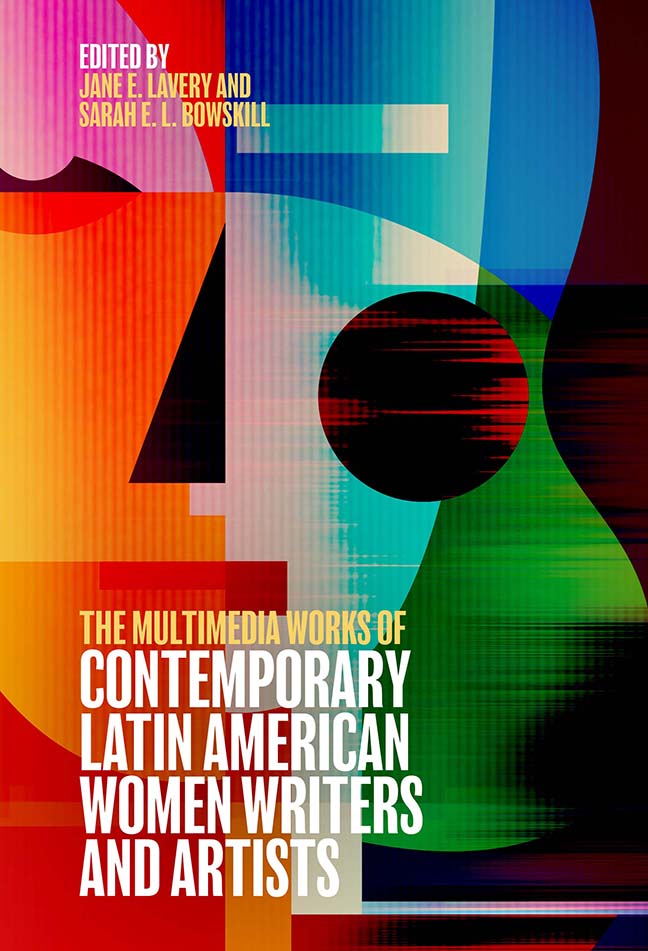Book contents
- Frontmatter
- Contents
- List of Illustrations
- List of Contributors
- Acknowledgments
- Introduction: A Crosscurrent of Contemporary Latin American Women Multimedia Writers and Artists
- 1 The Transliterary: The Novel and Other Multimedia Horizons Beyond (and Close to) the Textual
- 2 Commentary on Fe/males: Sieges of the Post Human (Transmedia Installation)
- 3 An Anthropophagic Ch’ixi Poetics
- 4 My Relationship with Artistic Creation Began with Words
- 5 Imagetext
- 6 Voices/Bodies
- 7 Redefining Meaning: The Interweaving of the Visual and Poetic
- 8 The Territory Is Home
- 9 Reflections on a Multimedia Practice
- 10 Digital Weaving
- 11 Eli Neira, Regina José Galindo, and Ana Clavel: “Polluting” Corporealities and Intermedial/Transliterary Crossings
- 12 The Digital Condition: Subjectivity and Aesthetics in “Fe/males” by Eugenia Prado Bassi
- 13 The Transmedia, Post-Medium, Postnational, and Nomadic Projects of Pilar Acevedo, Rocío Cerón, and Mónica Nepote
- 14 The Art of the Hack: Poets Carla Faesler and Mónica Nepote and Booktuber Fátima Orozco
- 15 The Places of Pain: Intermedial Mode and Meaning in Via Corporis by Pura López Colomé and Geografía del dolor by Mónica González
- 16 Words, Memory, and Space in Intermedial Works by Gabriela Golder and Mariela Yeregui
- 17 Fungibility and the Intermedial Poem: Ana María Uribe, Belén Gache, and Karen Villeda
- 18 Hypertext and Biculturality in Two Autobiographical Hypermedia Works by Latina Artists Lucia Grossberger Morales and Jacalyn Lopez Garcia
- 19 Dialogues Across Media: The Creation of (New?) Hybrid Genres by Belén Gache and Marina Zerbarini
- Bibliography
- Index
- Tamesis
1 - The Transliterary: The Novel and Other Multimedia Horizons Beyond (and Close to) the Textual
Published online by Cambridge University Press: 17 December 2023
- Frontmatter
- Contents
- List of Illustrations
- List of Contributors
- Acknowledgments
- Introduction: A Crosscurrent of Contemporary Latin American Women Multimedia Writers and Artists
- 1 The Transliterary: The Novel and Other Multimedia Horizons Beyond (and Close to) the Textual
- 2 Commentary on Fe/males: Sieges of the Post Human (Transmedia Installation)
- 3 An Anthropophagic Ch’ixi Poetics
- 4 My Relationship with Artistic Creation Began with Words
- 5 Imagetext
- 6 Voices/Bodies
- 7 Redefining Meaning: The Interweaving of the Visual and Poetic
- 8 The Territory Is Home
- 9 Reflections on a Multimedia Practice
- 10 Digital Weaving
- 11 Eli Neira, Regina José Galindo, and Ana Clavel: “Polluting” Corporealities and Intermedial/Transliterary Crossings
- 12 The Digital Condition: Subjectivity and Aesthetics in “Fe/males” by Eugenia Prado Bassi
- 13 The Transmedia, Post-Medium, Postnational, and Nomadic Projects of Pilar Acevedo, Rocío Cerón, and Mónica Nepote
- 14 The Art of the Hack: Poets Carla Faesler and Mónica Nepote and Booktuber Fátima Orozco
- 15 The Places of Pain: Intermedial Mode and Meaning in Via Corporis by Pura López Colomé and Geografía del dolor by Mónica González
- 16 Words, Memory, and Space in Intermedial Works by Gabriela Golder and Mariela Yeregui
- 17 Fungibility and the Intermedial Poem: Ana María Uribe, Belén Gache, and Karen Villeda
- 18 Hypertext and Biculturality in Two Autobiographical Hypermedia Works by Latina Artists Lucia Grossberger Morales and Jacalyn Lopez Garcia
- 19 Dialogues Across Media: The Creation of (New?) Hybrid Genres by Belén Gache and Marina Zerbarini
- Bibliography
- Index
- Tamesis
Summary
A PERIPATETIC BUT NECESSARY PREAMBLE
To be honest, I did not set out deliberately to reach the “transliterary.” Instead, it occurred in a natural way. I have always been very visual: in my writing the importance of the eye and the look is essential (“The look is the erection of the eye,” states Lacan). Also, many times, in moments of sterility or crisis, I turn to books with images and photographs: it is a way of freeing myself. I have been a writer since early childhood (I began to write at fourteen, and to publish aged seventeen), although my first lessons about stories were from a television program called Galería Nocturna (Nicht Gallery). There I learned how to build the framework for a structure which, later, in the Faculty of Philosophy and Arts at the National Autonomous University of Mexico, I discovered was a process described as In medias res (in the middle of things), in terms of chronology or retrospective. But I would say that, above all other definitions, I am a writer, because for me language has always had a constitutive register and rhythm, and I am a narrator and not a poet, because for me having a story to tell is paramount. But I feed myself on the visual, and when I am in the process of creation, while I am writing a novel or a story, I sense visual images within me that help me draw close to my literary discoveries. One example: when I was working on the novel Las ninfas a veces sonrien (When Nymphs Smile), I frequently became absorbed doing little drawings of droplets or leaves or petals which sprang up one at a time until they formed a gentle flow. The image turned out to be significant because the novel deals with a contemporary nymph who from the first chapter declares that she flows like a fountain. That drawing later found expression in the silhouette of a statue that gave rise to the installation and image that appeared on the cover of the book: a sculpture of white alabaster that I bought in a garden center and which I modified by painting her lips with red lipstick, and sticking on petals from artificial roses which spilled down from her chest to her feet in a vermilion cascade.
- Type
- Chapter
- Information
- Publisher: Boydell & BrewerPrint publication year: 2023

